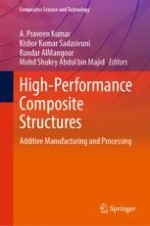This book covers advanced 3D printing processes and the latest developments in novel composite-based printing materials, thus enabling the reader to understand and benefit from the advantages of this groundbreaking technology. The rise in ecological anxieties has forced scientists and researchers from all over the world to find novel lightweight materials. Therefore, it is necessary to expand knowledge about the processing, applications, and challenges of 3D printing of composite materials to expanding the range of their application. This book presents an extensive survey on recent improvements in the research and development of additive manufacturing technologies that are used to make composite structures for various applications such as electronic, aerospace, construction, and biomedical applications. Advanced printing techniques including fused deposition modeling (FDM), selective laser sintering (SLS), selective laser melting (SLM), electron beam melting (EBM), inkjet 3D printing (3DP), stereolithography (SLA), and 3D plotting will be covered and discussed thoroughly in this book. This book also focuses the recent advances and challenges in polymer nanocomposite and introduces potential applications of these materials in various sectors.
